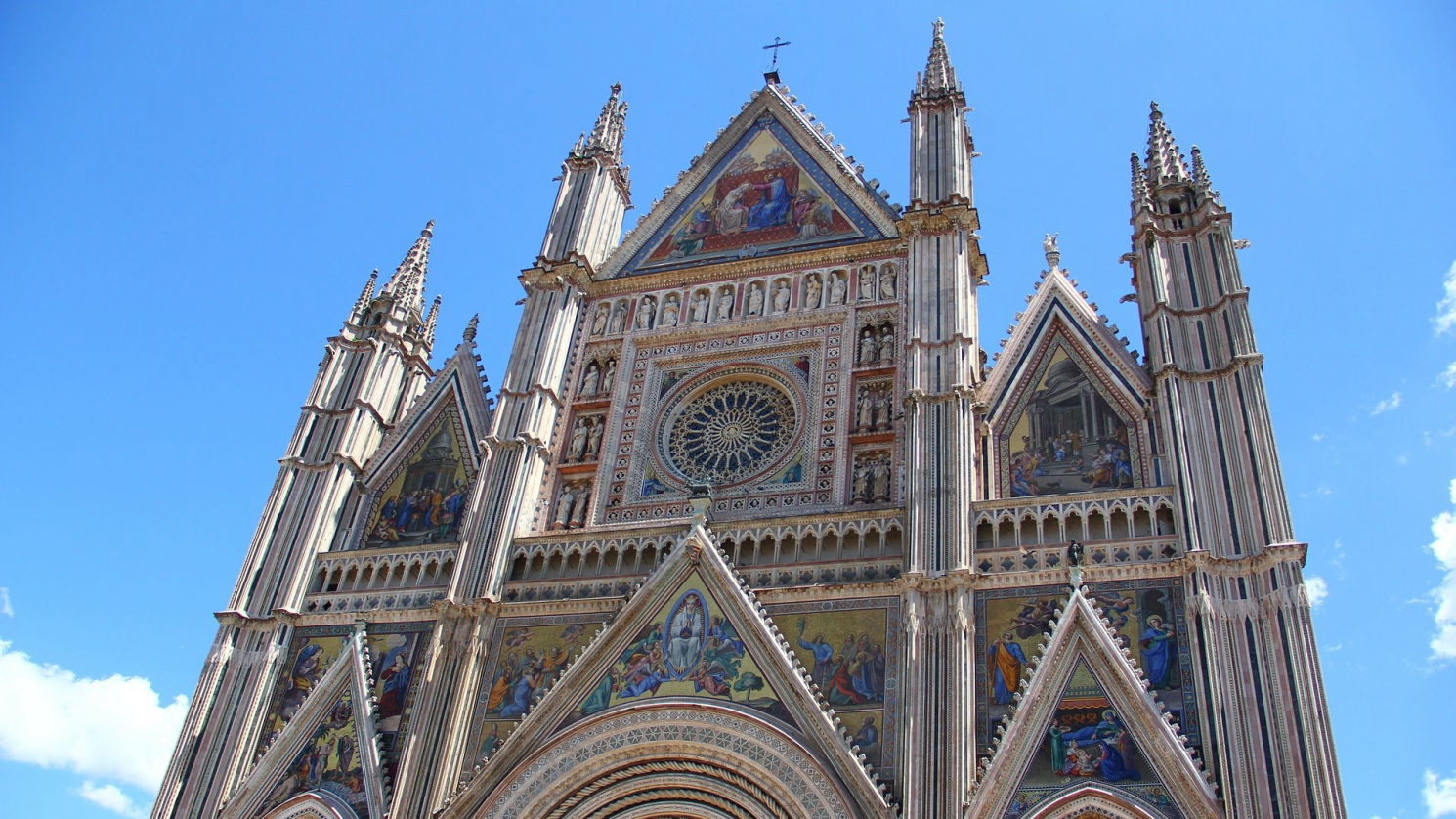
ORVIETO
Orvieto, the Etruscan Velzna, stands on a tufa platform high between 20 and 50 meters. Once in the city, it is impossible not to visit Piazza del Duomo, to admire one of the greatest medieval architectural constructions in Italy. The Cathedral of Orvieto (dedicated to St. Maria Assunta) was commissioned by Pope Niccolo IV in 1290 to preserve the famous body of bloody linen following the eucharistic miracle that took place in Bolsena in 1263. Fra Bevignate from Gubbio was certainly the first director of the work of the construction, but it is with the interventions of the Sienese Lorenzo Maitani that the new gothic layout is configured. His is the splendid cuspidate façade divided into three areas by four large fluted pilons, decorated with low and high relief by marble with depictions of the Old and New Testaments, while other illustrious artists ended up embellishing the prospect of the sacred temple. The interior, renovated at the end of the nineteenth century with far too destructive interventions, consists of three large and bright naves. From the right-hand side of the cruise you can reach the notable Chapel of San Brizio (1408-44), one of the highest testimonies of Italian painting, covered with frescoes by Beato Angelico, Benozzo Gozzoli and Luca Signorelli, who makes the masterpiece here of the Italian Renaissance. The developed theme is that of the Last Judgment. In the left arm of the cruise, the Chapel of the Corporal (1350-55) opens, built specifically to preserve the linen tablecloth stained with blood in the miracle of Bolsena. The reliquary, once intended to enclose the body, covered with silver plates, golden parts and shiny glazes, is one of the masterpieces of Italian jewelery. Among the numerous historical and artistic cues and itineraries, it is worth mentioning the well of San Patrizio, whose name derives from the custom of the friars who stop at the bottom of the well to purify themselves from their faults (in imitation of mystical practices). of the patron saint of Ireland), according to others by the resemblance to the cave in which the Irish saint used to retire in prayer. Carried out by Pope Clement VII in 1529 on a project by Antonio da Sangallo the Younger, he had to guarantee a safe water supply to the city in case of siege. A unique cylindrical structure 62 meters deep with two ramps, one for the descent and one for the climb, allowed not to hinder people and pack animals who came here to draw water.